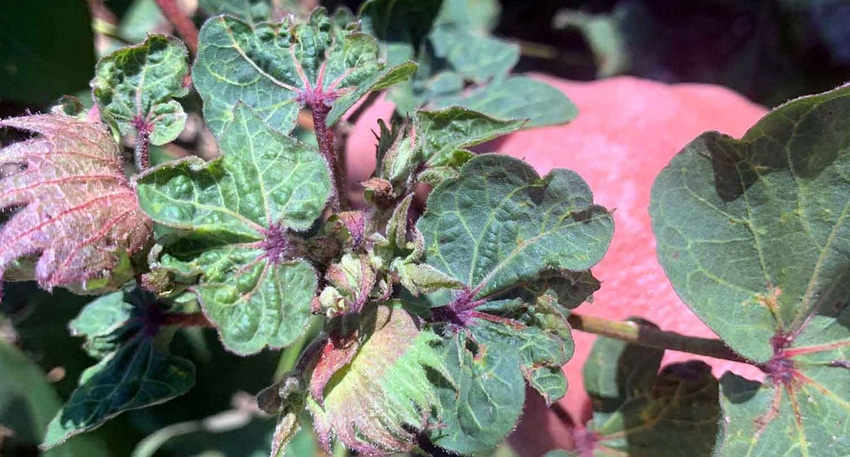
The sky isn’t falling when it comes to cotton leafroll dwarf virus.
That’s the message Auburn Extension Cotton Agronomist Steve Brown made clear in a presentation to the mid-year board meeting of Southern Cotton Growers at the Ritz-Carlton in Amelia Island, Fla. July 22.
Brown stressed that the science related to the virus is advancing. He said there have been incidents across the Cotton Belt, but field disasters are rare. Incidents appear to be more pronounced farther south and less so farther north. Cotton leafroll dwarf virus (CLRDV) tends to be more concentrated in the lower Southeast with incidents worse in 2018 than in 2019 or 2020.
“We’ve seen situations, and there are a handful of fields, where you have extreme yield loss and other places where we know the virus is present but without any major impact,” Brown said.
CLRDV was first reported in Alabama in 2017. It is closely related to a cotton virus known to occur in South America. Historically, that virus has caused up to 80% yield losses in some Brazilian cotton fields. Concerns became heightened when field disasters were reported in southwestern Alabama in 2018. Since then, significant research work across the Cotton Belt has been implemented to get a handle on CLRDV.
CLRDV is an insect vectored virus where aphids carry the pathogen and inject it in cotton as they feed on the plant. Brown said the plants show a wide range of symptoms such as leaf puckering and brittle leaves, but there is still uncertainty if these symptoms are actually caused by CLRDV. For the most part, yield does not seem to be significantly hampered by CLRDV.
Brown said researchers haven’t found immunity, but their work does show the virus is not seed transmitted. He said the long-term solution is breeding resistant lines, but that is a long and slow process. He noted that all current commercially available cotton varieties are susceptible to CLRDV.
“From an agronomic standpoint, I think incidentally from some of our other studies, we have seen pretty clearly, late planting in the presence of the virus makes you more vulnerable to the effects. Planting date have shown some influence,” he stressed.
In the absence of resistant lines, managing CLRDV is key. Researchers across the Cotton Belt are looking at fertility, the impact of nematode stresses and the “green bridge” concept where CLRDV is transferred from weeds or from cover crops. Brown noted that researchers are examining what cover crops have resistance and what cover crops actually host the virus.
“In terms of research, the big issue is what is it —in these problem fields — that triggers impact. We don’t understand that at this point. We do need a quick and cheap reliable diagnostic means. We obviously need resistant germplasm. We need to agree on symptoms,” Brown said.
About the Author(s)
You May Also Like






